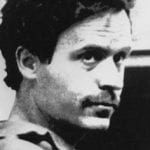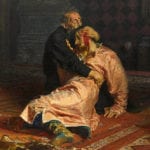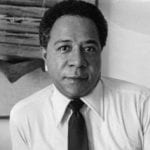 Weird Stuff
Weird Stuff  Weird Stuff
Weird Stuff  Our World
Our World 10 Ways Your Christmas Tree Is More Lit Than You Think
 Movies and TV
Movies and TV The 10 Coolest Stars to Set Sail on The Love Boat
 History
History 10 Things You Didn’t Know About the American National Anthem
 Technology
Technology Top 10 Everyday Tech Buzzwords That Hide a Darker Past
 Humans
Humans 10 Everyday Human Behaviors That Are Actually Survival Instincts
 Animals
Animals 10 Animals That Humiliated and Harmed Historical Leaders
 History
History 10 Most Influential Protests in Modern History
 Creepy
Creepy 10 More Representations of Death from Myth, Legend, and Folktale
 Technology
Technology 10 Scientific Breakthroughs of 2025 That’ll Change Everything
 Weird Stuff
Weird Stuff Ten Bizarre Facts About The Doge Meme
 Our World
Our World 10 Ways Your Christmas Tree Is More Lit Than You Think
 Movies and TV
Movies and TV The 10 Coolest Stars to Set Sail on The Love Boat
Who's Behind Listverse?

Jamie Frater
Head Editor
Jamie founded Listverse due to an insatiable desire to share fascinating, obscure, and bizarre facts. He has been a guest speaker on numerous national radio and television stations and is a five time published author.
More About Us History
History 10 Things You Didn’t Know About the American National Anthem
 Technology
Technology Top 10 Everyday Tech Buzzwords That Hide a Darker Past
 Humans
Humans 10 Everyday Human Behaviors That Are Actually Survival Instincts
 Animals
Animals 10 Animals That Humiliated and Harmed Historical Leaders
 History
History 10 Most Influential Protests in Modern History
 Creepy
Creepy 10 More Representations of Death from Myth, Legend, and Folktale
 Technology
Technology 10 Scientific Breakthroughs of 2025 That’ll Change Everything
10 Notorious Dictators Who Wrote Literary Works
The men on this list were cruel dictators. At their orders, if not by their own hands, thousands or, in some cases, even millions, of victims were killed, often after being tortured. These dictators’ names are deservedly infamous. So vicious and villainous were they that it is almost impossible to believe that any of them would care to read, let alone to write, novels or poetry, but all 10 of the notorious dictators on this list did just that.
While the literary quality of some of their works has been acclaimed, some of their writings have been dismissed as “unsuccessful.” One dictator’s novel was even carefully scrutinized by a U.S. government translator, U.S. officials, and the U.S. Central Intelligence Agency. Whatever one makes of the efforts of these poets and novelists, it seems clear that the grimness of their rule as despised dictators will forever overshadow their literary works.
Related: 10 Good Things Done By Evil Dictators
10 Julius Caesar
Today, Julius Caesar (100 BC–4 BC) is generally regarded as a Roman emperor, mostly, perhaps, because it is forgotten that he himself claimed the title of dictator a year before he was assassinated. Politically savvy Caesar used his military triumphs as a general and his political alliances to advance his career, serving first as the governor of Spain—at the time, a province of Rome—and then as the governor of Gaul, the region of Europe that today includes France and Belgium. As the governor of Gaul, he enriched himself, using his wealth to support his army when he crossed the Rubicon River, initiating a civil war with the Roman general Pompey, whom Caesar defeated. Caesar’s triumph was followed by his proclamation that he was now the dictator of Rome.
Caesar was also a man of letters whose oratorical mastery led the famous teacher and rhetorician Quintilian to hold him in high regard. As The Conquest of Gaul points out, Caesar’s “elegance of language” put him nearly on par with Rome’s greatest orator, Cicero. Caesar’s Commentaries on the Gallic War and the Civil War, although non-fiction, are described as “so elegantly and lucidly written that they compel…admiration even without the addition of further ornament.”
Gifted both in public speaking and writing, Caesar brought his immense writing talent to bear on poetry as well, writing The Journey, allegedly while traveling to Spain. Unfortunately, only half a dozen lines of the poem—a bit of literary criticism—have survived, hexameters expressing Caesar’s disappointment in the playwright Terence’s “lack of ‘comic force’…but [praising the dramatist]…as a lover of ‘pure speech.’”[1]
9 Giuseppe Garibaldi
The Warfare History Network’s biographical sketch of Giuseppe Garibaldi (1807-1882) captures the spirit of the man and the struggle he waged to reunite his beloved Italy: “Determined to end the divisions within his nation, [the] Italian soldier of fortune [who had become the dictator of Sicily]…landed in Sicily in May 1860 at the head of 1,000 revolutionaries, the Redshirts. The unification of Italy had begun.”
After intense fighting and the losses of thousands of soldiers culminated in victory at the Battle of Volturno River in south-central Italy, King Victor Emmanuel II of Sardinia, arriving with the main forces of the Piedmont Army, ordered Garibaldi and his troops to stand down. The king’s men, not Garibaldi’s, would capture the city of Capua. Garibaldi obeyed the king’s decree, surrendered his dictatorial powers, and returned to Caprera, slighted and humiliated by the king, who arrived with his army just in time to end the war that Garibaldi and his loyal men had waged for months.
As Jesse White Mario observes in his 1889 supplement to the autobiography of Giuseppe Garibaldi, the dictator wrote several novels, including Clelia, Il Volontario (The Volunteer), and I Mille (The Thousand), hoping to earn enough money from their sales to support himself and his family. But the books were “failures from a literary or even a historical point of view.” Indeed, Garibaldi himself replied to critics of his efforts that he himself was aware as much as anyone else of how worthless they were.
Citing the hostility of Garibaldi’s critics, Lucy Riall, author of Garibaldi: Invention of a Hero, agrees that the dictator’s novels were not especially successful, noting that only Clelia “was published widely in translation.” He struggled to find an Italian publisher for I Mille; his fourth novel, Manlio, was not published until 1982, long after the author’s death.[2]
8 Ludwik Mieroslawski
According to Ohio University, Ludwik Mieroslawski (1814–1878) was twice a failure. Described as a “Polish general, revolutionary activist, commander of revolutionary movements, and political writer,” he left Poland for France after participating in the November Uprising of 1830–1831. There, his attempt to organize a Young France failed. He next tried his hand at writing, publishing “several poems, historical dramas, and a novel,” but these literary efforts proved unsuccessful.
Returning to both Poland and politics, he supported a revolution in his homeland but was arrested by Prussian authorities, tried, and sentenced to death. He was released, however, when the Berlin revolution began. An additional arrest and release occurred, as did more failures to win against his military adversaries. Mieroslawski finally became a dictator during the 1863 January Uprising in Poland. He left Europe to go abroad, reestablishing the Polish Democratic Society and serving as its president until his “dictatorial” ways and the scandals he evoked led to his removal from office. Also, he was later ousted from the organization altogether. He died in “poverty and isolation.”
George J. Lerski’s Historical Dictionary of Poland, 966-1945, is kinder in its assessment of Mieroslawski’s literary work than his critics’ appraisals. The dictator’s 1822 debut collection of poems, Ballads and Romances, “constituted a literary breakthrough [opening] the era of Romanticism in Poland,” Lerski says, adding that Mieroslawski’s literary interests encompassed a variety of themes and genres. These included, among others, “Forefathers’ Eve” (Dziady), “a drama in verse” based on Lithuanian folklore; his mystical Books of the Polish Nation and of the Polish Pilgrims, which constitutes “a moral interpretation of the Polish history written in biblical prose”; and his supreme accomplishment, Master Thaddeus (Pan Tadeusz), a sentimental “novel in verse” completed in mid-1834.[3]
7 Emperor Meiji
Emperor Meiji (1814–1878) became the King of Japan at age sixteen. Through astute political, diplomatic, and cultural actions, he ushered in “the most glorious and prosperous period of Japan’s history” to date. A child prodigy when it came to poetry, he penned his first verse at age eight. Over his lifetime, he wrote between 90,000 and 100,000 thirty-one-syllable waka poems, which alternate lines of five and seven morae (short syllables) and contain a final line of seven morae known as the poem’s tanka.
The topics of the emperor’s poems are often conveyed by their titles; many celebrate nature. “Pine” reads, “In a world of storms/ Let there be no wavering/ Of our human hearts;/ Remain as the pine tree/ With root sunk deep in ston[e].” “Universal Brotherhood” ends with a question: “It is our hope/ That all the world’s oceans/ Be joined in peace,/ So why do the winds and waves/ Now rise up in angry rage?”[4]
6 Joseph Stalin
The name of Joseph Stalin (1878–1953) is not one that many would associate with the writing of poetry. Still, the Russian dictator was a poet during his days as a student at the Spiritual Seminary in Tiflis, Georgia. For a time, he even aspired to become a professional poet. Then, as Robert Service recounts in Stalin: A Biography, after becoming “alienated from the authorities,” he seemed to lose interest in poetry, as he had in his academic studies. He chose not to join the Georgian cultural elite, preferring, instead, to pursue “his studies of socialism, politics, and economics.” His participation in the Tbilisi literary scene in 1895-6 was fleeting, and he no longer contributed his works, despite his “pleasing style.”
His interest in poetry is all the more surprising, considering how he treated a celebrated Russian poet after coming to power. Unable to stomach the abuses of Stalinist oppression, Osip Emilievich Mandelstam penned but did not publish “a derogatory poem about Stalin in 1933.” It quickly spread through “word of mouth,” writes Helen Rappaport in Joseph Stalin: A Biographical Companion. A couple of lines made it clear how the poet felt about the dictator: Stalin, “the Kremlin’s mountaineer,” hammered out laws that were “flung/ Like horseshoes at the head, the eye, or the groin.”
When Stalin learned of the unflattering poem, he had Mandelstam arrested; soon, the poet was exiled for three years. He was fortunate, Rappaport suggests: Stalin had not ordered him executed, perhaps because the dictator suspected that having the poet shot might be seen as “an act of petulant retaliation for a mere poem.” Although Mandelstam later wrote an ode in praise of Stalin, “perhaps not so much to save himself as to protect his wife,” it seems that the poet had not learned his lesson, as he was arrested again after his exile ended. He returned to Moscow, where he commenced his anti-Soviet activities again. This time, he was sentenced to “one of the harshest camps of the Gulag,” where, in poor mental and physical health, he died within two months of his arrival.[5]
5 Benito Mussolini
An ally of Adolph Hitler, Italian dictator Benito Mussolini (1883–1945) is most remembered as Italy’s feared and hated fascist leader during World War II. The stony-faced, square-jawed tyrant, whose features, in some official portraits, seem carved of concrete, looks cold and unfeeling. At the time of his death by firing squad, Mussolini was so detested, even by his fellow Italians, that, after his execution, his body was hung upside down on a hook, alongside that of his slain mistress Clara Petacci. While El Duce (The Leader) hung by his heels, his remains were spat upon as the dictator was cursed, and an armed woman stepped forward from the crowd, firing five bullets into Mussolini’s corpse, announcing that her deed was an act of vengeance “for my five dead sons.” The New York Times expressed the judgment shared by millions throughout the world: the dictator’s death was “a fitting end to a wretched life.”
It is surprising, if not incredible, that a man such as Mussolini wrote a novel, an act usually considered to require not only some literary talent but also a measure of humanity and sensitivity. Of course, his 1910 Claudia Particella, l’amante del Cardinale (The Cardinal’s Mistress), was a far cry from most fictional narratives. As Mussolini 1883–1915: Triumph and Transformation of a Revolutionary Socialist, edited by Spencer M. Di Scalia and Emilito Gentile, observes, the dictator’s volume was, by its author’s own admission, a nasty book that he judged to be “fit for seamstresses and scandal.” Serialized before its publication in book form, the novel tells the story of two lovers in a “story of violence and shameful acts.” Described as written in the “style of [Alexander] Dumas,” it was a huge success, not only in Italy but also throughout much of the world, “being translated into at least ten languages.”
Although Mussolini served as Italy’s prime minister from 1922–1943 and would not become El Duce until 1943, it may have been that, when he wrote his novel, he had not yet fully developed into the hated monster he would become as his nation’s dictator. Perhaps he yet retained at least a modicum of the humanity and sensitivity needed to write a tawdry novel that would beguile people by delivering scandal, despite the growing inhumanity and brutality of the fascist wartime dictator.[6]
4 Francisco Franco
Jaime de Andrade’s 1942 novel Raz (Spirit of a Race) glorified “the principles of the Franco regime,” writes Jean-Benoit Nadeau and Julie Barlow in their La Historia del Español (The History of Spanish). At the same time, the book depicted its opponents as losers. Despite the heavy-handed censorship of literary works in Franco’s Spain, the book encountered no obstacles to its publication and easily obtained funds for a film adaptation. However, this turn of events is not as surprising as it might seem: Jaime de Andrade was the pen name of brutal Spanish dictator Francisco Franco (1892–1975), the true author of Raz.
As Paul Preston points out in The Spanish Holocaust: Inquisition and Extermination in Twentieth-Century Spain, as of 2012, “General Franco and his regime [continued] to enjoy a relatively good press [due to]…persistent myths about the benefits of his rule.” In reality, the author declares, both as a general and as Spain’s dictator, Franco was a cruel leader who, in his war diary of 1922, lovingly described “Moroccan villages destroyed and defenders decapitated.” Extreme violence was used repeatedly to suppress free thought, freedom of speech, and armed resistance before, during, and long after the Spanish Civil War (1936–1939).
According to Preston, Franco’s tactics included carrying bloody heads as trophies, fixing decapitated heads to bayonets, leaving a “Column of Death” from Seville to Madrid, implementing mass murder, using kangaroo courts; and conducting “cleansing and punishment operations.” Although deaths were often unregistered, it is estimated that Franco’s campaign of terror resulted in between 130,199 and 150,000 fatalities. This was the true state of affairs in Franco’s Spain, a truth never mentioned in the dictator’s novel.[7]
3 Mao Zedong
Chinese dictator Mao Zedong (1883–1976) did not write novels. He wrote poetry. In most of his poems, the verses feature images from the natural world or allusions to autobiographical and historical events, which are often military in nature. “Yellow Crane Tower” (1927) exemplifies the general technique of Zedong’s poems. According to Jeremy Ingalls’s Dragon in Ambush: The Art of War in the Poems of Mao Zedong, Zedong’s poem employs “wordplay associated with the theme of imperial rule.”
The poem reads, “Through far and wide the nine streams branch across the Middle Kingdom,/ Far deeper now one track that runs from south to north is threading./ But under gray-green murk of rain-damp grime,/ Tortoise and Snake still trap the major stream./ The Yellow Crane perhaps still knows the route?/ Here still survives a traveler’s resting site./ The wine I seize to pledge the torrent’s roaring,/ In my heart’s tide that mounts, its own waves soaring.”
According to Dragon in Ambush’s interpretation of Zedong’s poem, the nine streams created by the emperor Yu are contrasted with the even deeper track to the north that Zedong intends to cut as he and his army travel toward the Yangtze River, “the major stream” that must be “crossed” so that his forces can gain control of China.
The question that the speaker of the poem (Zedong himself) asks about the Yellow Crane expresses his confidence that he will not only cross the river and conquer China but that he shall also enjoy immortality as a conquering godlike figure, thanks to “the leverage provided by the crane, the supernatural bird commemorated at the site of the Yellow Crane Tower.” To many, this vision may seem odd. Still, it accords with Zedong’s own world view that the successful “dominant world-commander…who [can]…manipulate the…processes of nature and human nature” achieves an apotheosis of sorts, becoming “himself the ‘Heaven’ to which all human beings…are regarded as inevitable subjects.”[8]
2 Mohammad Raza Pahlavi
Mohammad Raza Pahlavi (1919-1980) was the Shah of Iran from 1941 to 1979, when the monarchy was abolished, and Ayatollah Khomeini (1900-1989) became the supreme leader for the next decade. As Abbas Milani points out in The Shah, his biography of Pahlavi, the future head of state was introduced to poetry by his constant companion, Ernest Perron, whom Pahlavi met as a student at Institut Le Rosey, a Swiss boarding school. Although Pahlavi never published any poetry, author Jon Ingvar Kjaran states that the young shah wrote some verses of his own while visiting with Perron, with whom Pahlavi also discussed poetry.
As an article in The Guardian points out, despite Pahlavi’s early fondness for poetry, the future Shah of Iran became a dictator who ran a brutally repressive regime, “enforced by the notorious Savak secret police.” His brutality and the corruption of his autocratic rule did not sit well with the Iranian people. When Pahlavi came into political conflict with his nation’s prime minister, Mohammad Mosaddeq, and “was forced to flee the country,” Pahlavi relocated several times, moving to Mexico, the United States, Panama, and Egypt, where he died in July 1980.[9]
1 Saddam Hussein
As the president of Iraq, Saddam Hussein (1937–2006) was a brutal dictator. His cruelty is evident in the sites of mass graves across the country that he ruled with an iron fist. The Iraqi people themselves testified to the atrocities to which their relatives were subjected. According to The White House website, Iraqi citizens were beaten, tortured, executed by dynamite, gassed, raped, shocked, attacked by dogs and lions, and subjected to medical experiments. In one case, an infant’s eye was gouged out before her skull was crushed by her being thrown against a wall. At Hussein’s son Uday’s direction, Olympic athletes were humiliated by being “smeared with feces and jailed or placed inside [sarcophagi] with nails pointed inward so they would be punctured and suffocated.”
The same barbaric dictator wrote both poetry and four novels, including Zabibah and the King, an allegorical love story. In fact, a U.S. government translator not only read but also studied Hussein’s book. As a result, the CIA concluded that, although Hussein himself probably didn’t actually pen the novel’s words, he had “carefully supervised its production and suffused it with his own words and ideas.” The U.S. government’s summary of the novel states that “Saddam’s style, sentence structure, and expressions are clearly present in the novel.” In other words, it seems that, although Zabibah and the King was largely ghost-written, it contains a good deal of Hussein’s own personal input. Writing for The New York Times, Elaine Sciolino states that, amid the volume’s “rambling, overheated prose,” U.S. officials found “an intriguing window into Mr. Hussein’s thinking.”
Set in the ancient world, the narrative is a love story featuring a powerful king (a stand-in for Hussein himself) and Zabibah, a beautiful villager who represents the people of Iraq. The king tells his beloved that he is a great leader who must be both obeyed and loved. In the process of the lengthy exchanges of dialogue between the lovers, the king shares his views on “God, politics, love, family, loyalty, betrayal and the will of the people” as well as his own “insecurities.”
The otherwise tender romance also includes a scene in which Zabibah is raped, “an obvious reference to the United States invasion of Iraq at the end of the Persian Gulf war,” Sciolino remarks, although U.S. officials interpreted the scene as Hussein’s take on what he saw as “Israel’s treatment of Palestinians.” The novel ends with the deaths of both Zabibah and the king on January 17th, the same day that the United States-led coalition began bombing Baghdad as part of the war to drive Iraqi forces out of Kuwait. The lovers’ bodies are buried side by side “so that the people can throw stones on his grave to desecrate it on the anniversary of his death.”
In addition to Zabibah and the King, Hussein wrote The Fortified Castle (2001), Men and the City (2002), and Bygone Demons (2006).[10]








